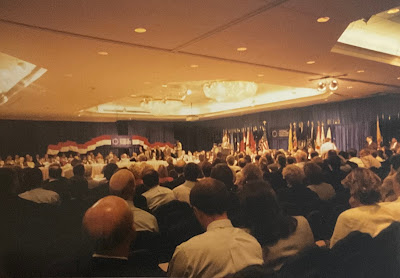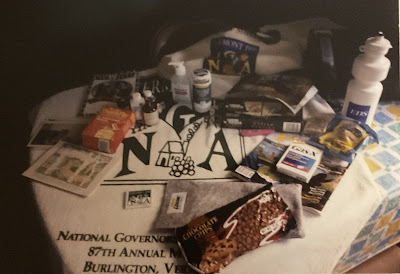By Greg Guma
They believe in the “deep state,” a secretive cabal of powerful people in the public and private sectors that has controlled governments for more than a century. If you haven’t noticed, they explain, it is likely because much of what is broadcast and printed as news is really a barrage of lies and propaganda. As a result, Russian television (RT) is a more reliable source than outlets like CNN and The New York Times. Tucker Carlson makes more sense to them about Ukraine and other issues than Rachel Maddow.
Internationally, they are certain that the US government, led by hypocritical Democrats and willing dupes, is eager to wage war against Russia, China, and any other potential rivals. The leaders of those nations, they believe, are actually victims, just protecting national sovereignty and their way of life against a ruthless empire bent on destruction and global control. Since Ukraine is full of Nazis and bent on genocide, they are not worth defending. And NATO? It’s a dangerous bully that ought to be dismantled.
Another threat, in their view, is government mandates, manifested in the form of public orders to wear masks or get vaccinated. That and the “lockdowns” imposed in response to the COVID pandemic were really just strategies to prepare people for a police state. So they cheer on truckers who try to shut down cities to make this point.
Hearing such sentiments from the right shouldn’t come as a shock. What has largely been ignored, however, is that some of those loudly voicing these views consider themselves leftists or progressives. Unfortunately, disinformation migrates too easily from media fronts and diplomats in Russia to Democratic Socialists and self-proclaimed radicals in the US. This is one of the reasons that the current political system, often called bourgeois democracy in such circles, is in the process of slow collapse.
After decades of open hostility, the far right and far left have finally found common ground — contempt for liberal elites and their “oppressive” governments.
In political science this is known as the horseshoe theory. The idea is the far left and far right, rather than being at opposite ends of the spectrum, actually resemble each other in many ways. They are the two ends of an ideological horseshoe.
Political scientist Jeff Taylor has noted that the political spectrum “may be linear, but it is not a straight line. It is shaped like a horseshoe.” Some argue that this may explain the resurgence of antisemitism on both the right and left.
In 2018, Kyrylo Tkachenko warned that the common ground is “based on shared anti-liberal resentment. Of course, there remain palpable differences between far left and the far right. But we should not underestimate the dangers already posed by these left-right intersections, as well as what we might lose if the resentment-driven backlash becomes mainstream.”
Often the response is dismissive: this is a gross and insulting oversimplification. Both the far-right and far-left may oppose the liberal democratic “world order,” they admit, but for very different reasons.
Despite such differences, however, the extreme declarations and leading questions of popular figures, so-called “defenders of liberty” from Tucker Carlson and Joe Rogan to Vandana Shiva and Robert Kennedy Jr., are increasingly music to many ears. For some it’s an addiction, for others a guilty pleasure. As strange as it seems, this unlikely convergence is one of the reasons that Trump (or someone like him) could become president again.
Consider the conspiracy theorists who discounted the safety and efficacy of COVID-19 vaccines and other public-health mandates. They are often portrayed as right-wing, but many anti-vaxxers are organic farmers, members of homeschooling and alternative-education communities, and anti-war hippies. The anti-vax faction is strongly linked to left-libertarian politics and a deep mistrust of institutional authority.
In a 2021 article for The Atlantic, Eoin Higgins noted that some progressives are drawn to ideas commonly associated with conservatives. One example is “a local journalist and Bernie Sanders supporter whom I know through Facebook… She told me she finds the idea that COVID is caused by 5G cellphone towers more believable than person-to-person transmission.”
Last September George Monbiot wrote in The Guardian, “It’s not just anti-vax beliefs that have been spreading through these movements. On an almost daily basis I see conspiracy theories travelling smoothly from right to left. I hear right-on people mouthing the claims of white supremacists, apparently in total ignorance of their origins. I encounter hippies who once sought to build communities sharing the memes of extreme individualism. Something has gone badly wrong in parts of the alternative scene.”
Mother Jones has also weighed in. In 2020, Keira Butler noted in an article that some of the loudest anti-vaccine voices have come from “politically liberal, mostly white, and affluent enclaves — think famously hippie places like Marin County, California, or Boulder, Colorado — where parents worried about the side effects of what they perceive as toxins in vaccines. Anti-vaxxers in these places tended to pride themselves on the purity of their lifestyles — they bought organic groceries, railed against genetically modified food, and were suspicious of the electromagnetic waves emitted by cell phones.”
We are seeing the same phenomenon in Vermont. But most so-called “thought leaders” are too polite to discuss this. It might offend some of their friends. Or, despite the state’s progressive reputation, they just don’t care.
Bottom line: Along with truth — often the first casualty of war, whether it’s kinetic or cultural — democracy is also in decline. But it’s not dying in darkness. It’s fading away in broad daylight and plain view. So far we’re only looking at — and talking about — part of the picture.
* * * *
After I published this essay, it was submitted to a Vermont-based publication I had edited for more than a decade. What followed was an apt example of the problem. Rather than posting it, or responding with a substantive criticism, the editor instead published an eight-year old article that makes a very different point. The headline claims: “Left-Right White Solidarity Basis of Support for U.S./EU/NATO Wars on Global Humanity.”
In a note running before the essay, the editor asserted as a fact that what occurred in Ukraine in 2014 was a “U.S.-backed neo-Nazi coup.” She also attacked the horseshoe theory — without bothering to explain what it is. As she later explained, she simply doesn’t think it’s “valid.”
What she does endorse is the neo-Nazi coup charge, a recurrent Russian disinformation narrative, along with the argument that Ukrainian politics is dominated by fascists and Nazis. The actual evidence, and the testimony of those who took park in the movement, does not support that. Instead, it reveals a broad-based grassroots uprising, launched by a diverse group of people who were tired of President Viktor Yanukovych. Some demonstrators were certainly nationalists, but others were liberals, socialists, libertarians, Christians and atheists. There were also workers from the countryside and IT geeks from Kiev.
The person widely credited with lighting the match was Mustafa Nayem, a Ukrainian journalist, who asked a simple question on Facebook after Yanukovych stopped preparations to sign a deal with the European Union and turned toward Russia: Was anyone planning to go to the Maiden? In just an hour he had more than 1,000 likes and that night 400 people showed up. He described them as “the so-called creative class.”
The mass demonstrations that followed remained peaceful for weeks. But eventually, the government responded with force. In the regime’s last hours, snipers killed dozens of protesters; eleven police also died. Nevertheless, the Russian version has persisted, used as a pretext to justify its aggressive response ever since. Unfortunately, some activists and writers on the left have joined the chorus.
As George Monbiot wrote, “Something has gone badly wrong in parts of the alternative scene.”
* NATO critics and those sympathetic to Russia’s concerns point to its expansion since the Cold War. In fact, the last time any new members bordering Russia joined NATO was 2004. They were Latvia, Estonia and Lithuania. Leaders of all three Baltic states have recently expressed concerns about Russian destabilization.





